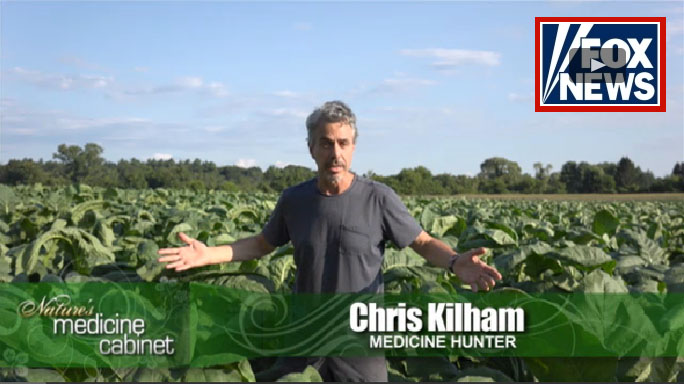Tobacco footage by Zoe Helene
It’s an admittedly odd twist. Tobacco, long vilified for its role in the deaths of approximately 6 million people per year, now is playing a key role in the development of an anti-Ebola drug. The World Health Organization places deaths due to direct tobacco use at around 5 million people globally per year, with another 1 million due to exposure to second-hand smoke. That should be ample reason to keep a safe distance from the nicotine-bearing plant. But even as lethal as tobacco is, it may be the key to saving lives.
The recent outbreak in West Africa of the hemorrhagic fever disease Ebola has health officials around the world on high alert. Never before has the disease, believed to be transmitted to humans from bats, broken out in an urban environment. Previous Ebola outbreaks have been in rural areas, where they could be relatively easily contained and controlled. But with Ebola deaths now topping 1,000, health officials are scrambling for ways to treat this rampant disease.
This is where tobacco comes in. A small company named Mapp Biopharmaceutical in San Diego has developed a drug, which though not approved for use in humans by any official body, appears to be responsible for saving two human lives thus far. The drug, ZMapp, was given to two infected American aid workers, Dr. Kent Brantly, and Nancy Writebol, both of whom are now under care in Atlanta, Georgia after being flown home from Africa.
In critical condition and failing, Brantly and Writebol were given the ZMapp drug, which is administered intravenously. Both are apparently in better condition than they were prior to administration of the drug. A third patient, a Spanish priest named Miguel Pajares, was given the drug but died anyway.
The manufacture of ZMapp is a curious if ingenious process. First, mice are injected with antigens from the Ebola disease. These antigens cause the mice to produce antibodies, which are immune factors that fight disease. These antibodies are harvested from the mice, and are combined with B-cells and cancer cell lines. This complex process produces disease-specific hybridomas, which are cell lines that produce agents that fight the particular disease from which the initial antigens were derived. This technology of developing hybridomas won the Nobel Prize for medicine in 1984, an award shared by Georges J.F. Kohler, Cesar Milstein and Niels Kaj Jern.
The next step of the manufacture of ZMapp is where tobacco plays a pivotal role. After the Ebola antibody hybridoma is made, it is transferred into tobacco by infecting the plant with gram negative bacteria. This causes the tobacco plants to become factories for the production of the antibodies. Eventually the tobacco is overtaken by the disease culture, and begins to die. At that time, the leaves are harvested, the antibodies are extracted and purified from the plant, and then the antibodies are frozen until use.
In a study reported in Scientific Reports in November 2013, researchers wrote about the treatment of 6 Ebola-infected macaques that were given the ZMapp drug. All of them survived the disease. Following this result, all 6 were re-infected, and survived again. This gave researchers an optimistic prognosis for the possible use of ZMapp in humans.
Although ZMapp is still not approved for use in humans, in cases in which patients may well die, the overwhelming sentiment among health officials is that in times of desperation, desperate measures are warranted. Currently, small batches of ZMapp are on their way to Liberia, to help treat doctors infected by Ebola in that country. WHO announced Tuesday that "In the particular circumstances of this outbreak, and provided certain conditions are met, the panel reached consensus that it is ethical to offer unproven interventions with as yet unknown efficacy and adverse effects, as potential treatment or prevention." If patients are likely to die, why not try the drug?
There is plenty of tobacco for the production of the ZMapp drug, but there is very little of the drug itself. Another company, Kentucky BioProcessing, has offered to help increase ZMapp production. But in the best of circumstances, this is likely to take several months. In the most optimistic forecasts, there will likely be too little ZMapp to treat those infected. And if Ebola continues to spiral out of control, then access to the drug will be greatly restricted.
The current Ebola outbreak is serious and getting worse. The development of ZMapp is ingenious and potentially life-saving. And tobacco, responsible for an immense number of deaths throughout history, may play a key and redeeming role in saving lives at risk. How’s that for a twist.


